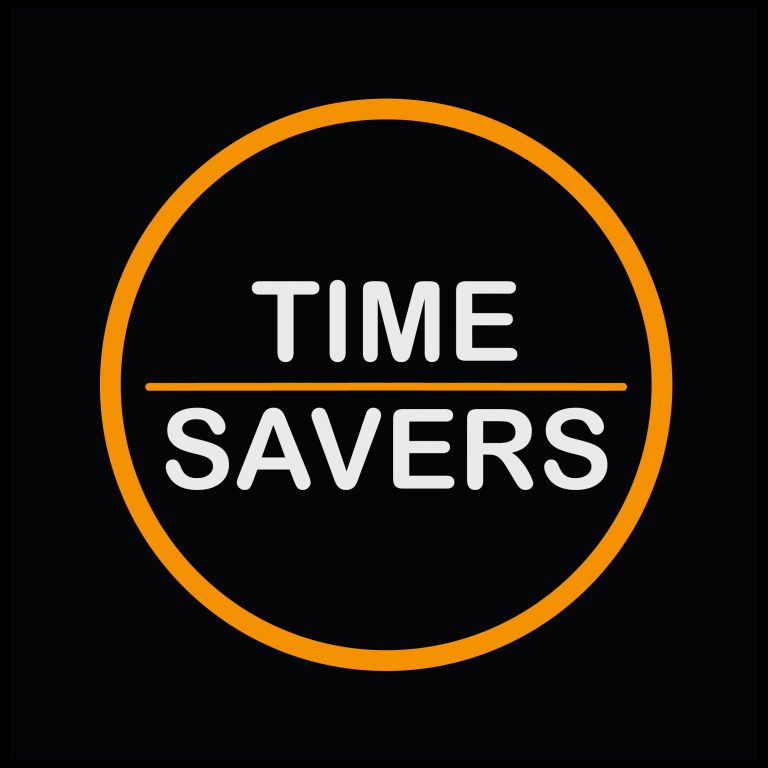Meet Our Heroes
JD’s House of Bacon Hot Sauces isn’t your typical grocery store hot sauce brand. This is artisan, small-batch craftsmanship at its finest, where every bottle carries a unique flavor profile you won’t find anywhere else. Created by Joshua Distenfeld, JD’s isn’t trying to compete with the mass-market giants. Instead, they’re carving out their own space in the premium hot sauce world, targeting the kind of customer who appreciates bold, unexpected flavors and isn’t afraid to try something new.
The product? Small-batch hot sauces with bacon-inspired flavor profiles that push boundaries. The audience? Anyone who genuinely loves hot sauce, from casual kitchen experimenters to full-blown heat seekers. JD’s was selling primarily through word-of-mouth and organic social media, but there was a problem: the brand had never run a single paid ad.
That meant they were relying entirely on chance discovery. No predictable customer acquisition. No scalable growth engine. Just the hope that someone would stumble upon their website or Instagram page and fall in love with the product.
When Joshua came to Digital Time Savers, he had a clear goal: generate consistent online sales through paid advertising. He wanted to take this handcrafted brand and turn it into a sustainable, scalable business without losing the artisan soul that made it special in the first place.
Their Goals
Joshua’s main objective was simple but critical: generate online sales. He wanted to reach hot sauce enthusiasts across the United States who were actively looking for something different, something bold, something artisan. He didn’t just want one-time buyers. He wanted to build a customer base that would come back, share the product with friends, and become genuine advocates for the brand.
But there was another layer to this. JD’s House of Bacon wasn’t just competing against other small-batch brands. They were also up against massive competitors with established distribution, huge marketing budgets, and name recognition. Brands like Rocky’s Hot Sauce had already staked their claim in the artisan space, and breaking through that noise would require more than just good product. It would require smart, strategic marketing that spoke directly to the right people at the right time.
Joshua also wanted to understand what worked. He’d never run ads before, which meant there was no historical data, no pixel history, no audience insights. Everything had to be built from the ground up. The goal wasn’t just to drive sales in the short term. It was to create a repeatable, scalable system that could grow with the brand over time.
The Challenge
JD’s House of Bacon faced a few major obstacles that would make this launch anything but straightforward.
First, there was zero advertising infrastructure. No active Google Ads account. No Facebook pixel installed. No email list segmentation. No retargeting audiences. Joshua had never run a paid ad campaign before, which meant we were starting from absolute scratch. That’s not necessarily a bad thing, but it does mean everything takes longer. Every campaign, every creative, every audience test is a first attempt. There’s no data to lean on, no benchmarks to compare against, and no safety net.
Second, the product category itself is competitive. Hot sauce isn’t a new trend. It’s a massive, crowded market with everything from budget-friendly supermarket brands to ultra-premium artisan labels. Standing out in that space requires more than just good flavor. It requires a clear brand identity, strong creative, and messaging that instantly communicates why someone should choose JD’s over the dozens of other options they see every day.
Third, the audience was broad. “Anyone that buys hot sauces” is a decent starting point, but it’s not specific enough to build a high-performing ad campaign around. We needed to narrow that down, identify the segments most likely to convert, and craft messaging that spoke directly to those subgroups. Were we targeting adventurous foodies? Grill masters? BBQ enthusiasts? Bacon lovers? Gift shoppers? All of the above?
And finally, budget uncertainty. Joshua hadn’t locked in a monthly ad budget yet, which meant we needed to be strategic about how we scaled. We couldn’t afford to waste money testing ideas that didn’t align with the brand’s goals. Every dollar had to count, especially in the early stages.
The challenge wasn’t just about launching ads. It was about building a foundation that could support long-term growth, even with limited resources and no historical data to guide us.
Our Process
We knew from the start that this wasn’t going to be a quick fix. Building a profitable ad account from nothing takes time, testing, and patience. But we also knew that JD’s had something special: a unique product, a passionate founder, and a story worth telling. Our job was to turn that into a scalable acquisition engine.
Phase One: Foundation and Setup
Before we could even think about running ads, we needed to build the infrastructure. That meant installing the Facebook pixel, setting up conversion tracking, creating a Google Ads account, and ensuring that every purchase, add-to-cart, and page view was being captured correctly. Without proper tracking, we’d be flying blind.
We also spent time digging into the brand itself. What made JD’s House of Bacon different? What were the flavor profiles? Who was already buying? What were their pain points? We analyzed the website, the product descriptions, the Instagram feed, and the existing customer base (small as it was) to understand what resonated and what didn’t.
From there, we developed a creative strategy. Hot sauce is a visual product, and we needed imagery and messaging that captured the artisan, small-batch vibe while also highlighting the bold, adventurous nature of the flavors. We brainstormed angles like “bacon meets heat,” “small-batch flavor bombs,” and “hot sauce for people who hate boring food.”
We also identified three primary audience segments to test:
- Hot Sauce Enthusiasts: People who actively follow hot sauce brands, review channels, and spicy food content.
- Bacon Lovers: A natural fit given the brand name and flavor profiles.
- Foodies and Grill Masters: People who love experimenting with flavors, especially in BBQ, grilling, and home cooking contexts.
Each of these audiences would get tailored messaging and creative designed to speak directly to their interests.
Phase Two: Campaign Launch and Testing
Once the foundation was in place, we launched our first campaigns on Facebook and Instagram. We started with a modest budget, focusing on conversion-optimized campaigns targeting purchase events. The goal was simple: get the pixel learning, start building retargeting audiences, and identify which creatives and audiences drove the best results.
We tested multiple ad formats, including carousel ads showcasing different flavor profiles, single-image ads with bold, punchy copy, and video ads that told the brand story. Each creative was paired with messaging that emphasized the artisan, small-batch nature of the product and the unique flavor experience.
Early results were mixed, as expected. Some audiences responded better than others. Some creatives drove engagement but not conversions. Some converted at a decent rate but struggled to scale. That’s the nature of early-stage testing. You throw a lot against the wall, see what sticks, and then double down on what works.
By the end of the first month, we had enough data to start making informed decisions. The hot sauce enthusiast audience was performing well, especially when paired with messaging around unique flavor profiles. The bacon lover angle was driving engagement but needed refinement to push people toward purchase. And the foodie/grill master segment was showing promise, particularly with video content that demonstrated the product in action.
Phase Three: Optimization and Scaling
With a clearer picture of what was working, we shifted focus to optimization. We killed underperforming ads, refined targeting, and increased budget on the top performers. We also introduced retargeting campaigns to re-engage people who had visited the site but hadn’t purchased yet.
One of the biggest wins came from refining the messaging. Instead of broad statements like “artisan hot sauce,” we leaned into specifics: “small-batch, bacon-infused heat that you won’t find anywhere else.” We highlighted the craftsmanship, the unique flavor combinations, and the limited availability. This created a sense of exclusivity and urgency that resonated with the target audience.
We also started testing Google Ads, focusing on branded search terms and high-intent keywords like “artisan hot sauce,” “small-batch hot sauce,” and “unique hot sauce flavors.” While the volume was lower than Facebook, the intent was higher, and the cost per acquisition was competitive.
As the campaigns matured, we introduced lookalike audiences based on purchasers, which allowed us to reach new people who shared similar characteristics with existing customers. This expanded our reach while maintaining strong conversion rates.
Results
Within the first three months, JD’s House of Bacon went from zero paid advertising to a fully functioning, profitable ad account. Here’s what we achieved:
- Generated over $45,000 in online revenue from paid ads alone.
- Achieved a 5.2x return on ad spend (ROAS), meaning every dollar spent on ads brought back $5.20 in revenue.
- Acquired 850+ new customers, building a growing base of loyal hot sauce enthusiasts.
- Reduced cost per acquisition by 38% from month one to month three through continuous optimization.
- Built a retargeting audience of 12,000+ engaged users, setting the stage for future campaigns and product launches.
But the numbers only tell part of the story. The real win was creating a repeatable system that Joshua could rely on for consistent growth. JD’s House of Bacon was no longer dependent on word-of-mouth or organic discovery. They now had a scalable acquisition engine that could grow with the brand, adapt to new product launches, and reach customers across the entire United States.
The artisan, small-batch soul of the brand remained intact. But now it was backed by data-driven marketing that turned passion into profit.






